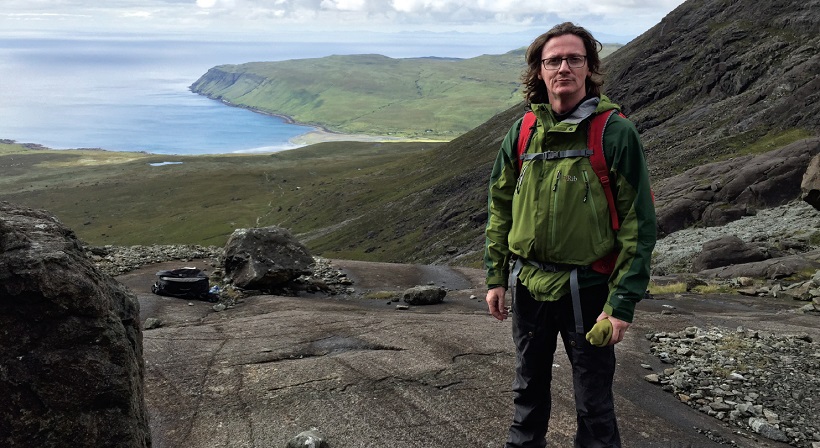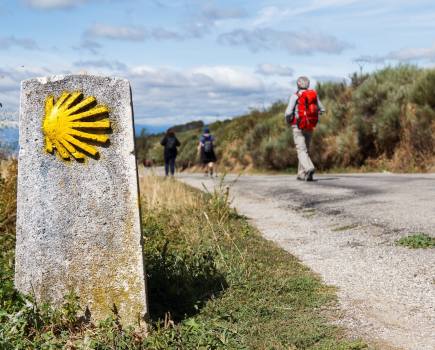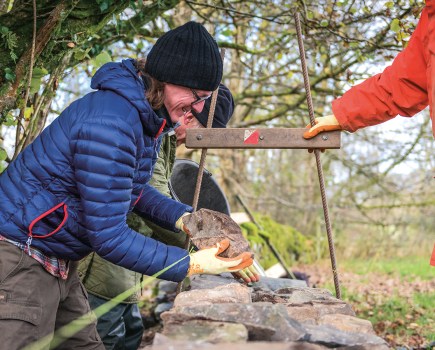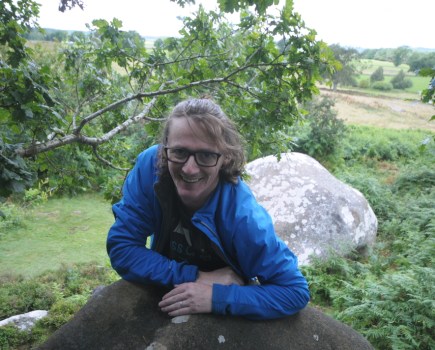The sun always shines on TV, right? Not so much, says Ed. Our columnist recalls his recent TV excursions on the In Pinn and Blencathra
I’ve been into mountains for a while. Having eschewed any form of physical activity throughout all of my twenties and a good chunk of my thirties, my outdoor career could be said to have bloomed a little late, but over the last few years I’ve been making up for lost time. My relationship with TV started much earlier. Beginning with a four-minute stand-up routine on Australia’s Hey Hey! It’s Saturday! back in 1996, I’ve been on and off the telly for nearly 20 years now and the mixture of quality programmes and utter hogwash I’ve been involved in has meant my TV career has had as many ups and downs as my hillwalking one.
Lately, there has been a certain amount of talk of combining these two facets of my life and making some sort of mountaineering or outdoor adventure show. For the most part, it has just been talk. Apart from showing up on Skye in an episode of the BBC’s Three Men in a Boat and a brief slide down a Nicaraguan volcano in Dara and Ed’s Great Big Adventure, efforts to bring my love of high places to the screen have very much remained at the “talking to enthusiastic producers” stage of development.
In the last month, however, I’ve had the opportunity to be a part of two different productions, occupying opposite ends of the outdoors-filming spectrum. One was the upcoming Blencathra: Life of a Mountain by the gifted amateur and thoroughly independent filmmaker Terry Abraham. The other was the hugely successful, flagship documentary series, Countryfile, produced by the much beloved, hugely respected, hulking behemoth that is the BBC. Obviously, there were big differences in the size of crew involved and the time taken to film these pieces but there were also striking similarities, the main one being the manner in which inclement weather hampered our efforts.
The Inaccessible Pinnacle
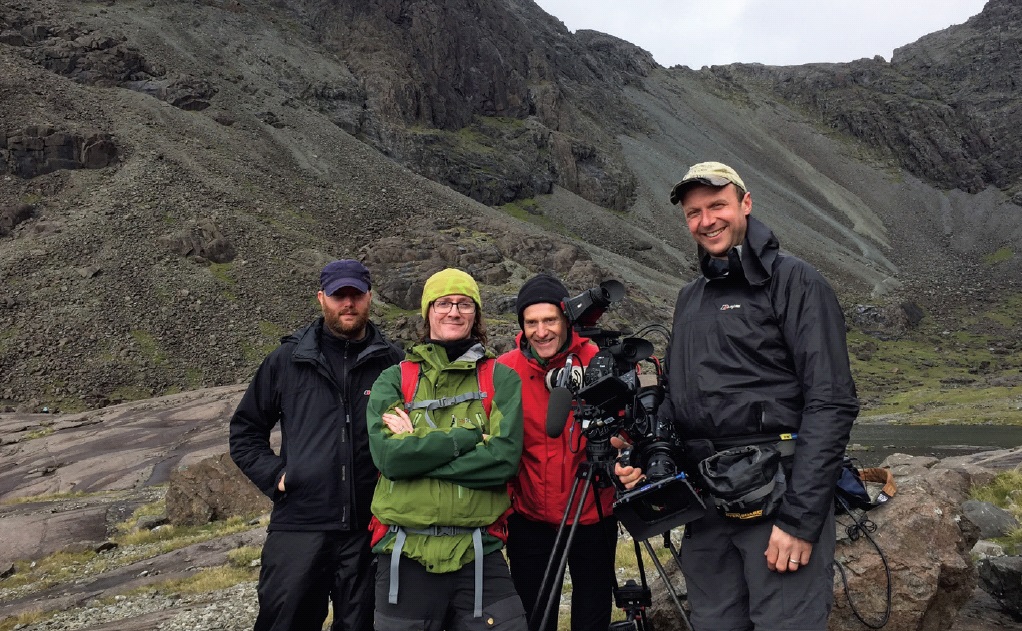
Copyright of BBC/Photo by Matt Smith
This year’s Countryfile episode have featured a new strand in which celebrities show the viewers a place in the countryside that is special to them in some way. Being considered to have achieved “celebrity” status I was asked if I’d fancy taking part, and knowing that I had a fondness for Munro-bagging they suggested I might like to do a segment on that. Straightaway I suggested the Cuillin Ridge and the Inaccessible Pinnacle.
The In Pinn had loomed large in my mind since I first started down the road of Munroism and the fact that it was considered the only top where ropework was deemed essential, gave it a unique quality worthy of the BBC’s attention. The shoot, handily enough, came just a fter I finished at the Edinburgh Fringe. I had my last show on Sunday night. Monday morning I packed up my stuff and drove to Skye to meet the crew. There was a director, a cameraman, a safety adviser (in charge of roping up the cameraman) a researcher and a soundman.
As we were chatting about the following day’s shoot I learned that the soundman, Brian, had been the soundman for Muriel Gray when she did the In Pinn some 25 years earlier for her Munro Show: the programme that first inspired me to take up Munrobagging as a hobby. I was informed that the weather forecast indicated that Wednesday would be our best bet for summiting and so we would just film my interview and some general landscape walking shots on Tuesday.
Tuesday dawned unsettled but mostly clear. I spoke earnestly and, I hope, humorously, on camera about my love of Scottish mountains. We met up with our guide, Martin Moran, and hiked up to Coire Lagan. Along the way, we stopped frequently. The camera would then be set up ahead of me and I would walk past it. Sometimes I would be left sitting for nearly an hour while they hiked ahead. I’d wait with a walkie talkie for my signal to follow on. It all felt so silly and so unlike a normal hill-walk.
At Coire Lagan we filmed some more chat and some sweeping vistas, then called it a day, for the filming at least. I wasn’t coming out of all this without ticking of a summit, so Martin and I scrambled up the Great Stone Chute and bagged the top of Sgurr Alasdair. Th e next day the weather was lousy. Of course it was: how could it not be? We had two days to film. We were told which one would be best so, of course, that was always going to be the day when the wind picked up and the rain lashed down.
By the time we got to the base of the In Pinn, I was pretty much soaked to the skin, but that wasn’t the reason I started to shiver. Having had the Inaccessible Pinnacle described to me, I wasn’t expecting something of such height. From our initial vantage point it looked horribly forbidding and I started to get the willies. The next thing we did was film me meeting up with Martin. This was a typical TV moment, where you shake hands with a person you’ve been with all day and pretend the two of you have just met. In the course of chatting about the climb, I asked Martin if there was any reason why he might call it off. He said that if the wind got over 40 miles an hour it would be a safety issue and we might have to abort. “Let’s hope it doesn’t come to that,” I said, not sure if I really meant it.
Our climb, which Martin told me would normally take about an hour, took a shade over three hours to do. The most timeconsuming part was getting the camera up there, trying to get their ropes out of our way, climbing past the camera, then waiting for the camera to reposition. All the while, the wind was trying to whip us off the mountain and I could barely hear Martin’s instructions. The most challenging part was trying not to swear (this was Countryfile after all) while trying to reach handholds I couldn’t see because the gale force winds were making my eyes water. The relief when I finally reached the top was palpable.
After the abseil down, I asked Martin what speed he reckoned the winds were while we were on the ridge. “I’d say they were about 40mph,” he said. “So, about the speed at which you said we’d call it off?” I replied. He at least had the good grace to look sheepish.
On Blencathra
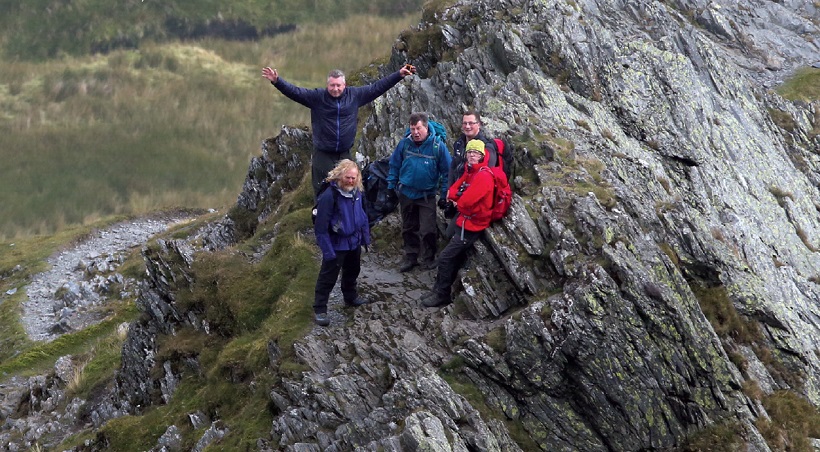
A far more sedate time was had filming Blencathra: Life of a Mountain, with mountain auteur Terry Abraham. His first feature about Scafell was a huge success and a great achievement for a self-taught amateur. The writer and broadcaster Stuart Maconie had popped up in that and Terry was keen for Stuart and I to do something together for the Blencathra film.
It was decided we would tackle Sharp Edge, guided by the same man who had guided Julia Bradbury along it for her Wainwright Walks show, David Powell- Thompson. For this shoot, the people on screen would outnumber the people behind the camera. Terry was director, camera and sound. His mate Dan assisted him by lugging stuff about and acting as a second cameraman.
I’ve been a fan of Stuart Maconie’s for a while and had spent a very pleasant evening drinking and chatting with him at the Latitude Festival a few years previously. We had made half-hearted attempts to go hillwalking together in the past but had never been able to get our diaries to coincide, so I was thrilled that we were getting to go out on the hill together. Compared to the BBC shoot, things were much easier.
We hiked up to Scales Tarn where we pretended to meet David. (Some conventions are universal.) A quick chat on camera about the climb ahead and then we were off… to wait around for the wind to drop. You see, as well as his skeleton crew, Terry had decided to also call in a drone camera team to film us as we climbed. Unfortunately, the wind wouldn’t permit the £60,000 worth of flying camera equipment to leave the ground.
The lot of us started along Sharp Edge. After the In Pinn, I don’t mind saying I found it a doddle. I tried not to gloat or make too much of Stuart’s obvious discomfort on the more exposed parts but sometimes pride got the better of me. Again we waited for a while for the wind to die down but it was not to be. The drone team would have to come back another day.
We finished the climb, Terry making do with hand-held camera shots, and then it was back to the pub for a lively debate about the decentralisation of the BBC. It’s fair to say that I’ve learned a lot about the techniques used in mountain filming over recent weeks. But I think the most enlightening thing I’ve learned is that it really sucks the fun out of hillwalking! Perhaps it’s best I keep my two separate careers just that: separate.
The Countryfile episode featuring Ed Byrne on he Inn Pinn was broadcast early in 2016.
Terry Abraham’s Life of a Mountain: Blencathra is available on DVD and will be screened on the BBC later this year.

